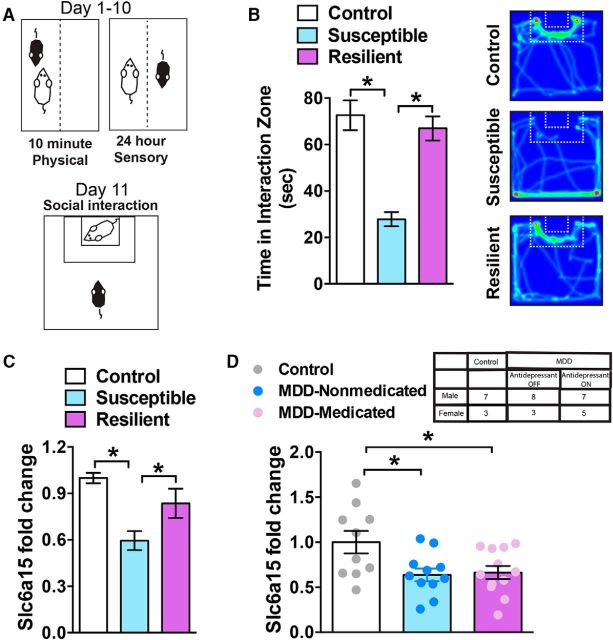Figure 1.
Slc6a15 is reduced in the stress-susceptible NAc and postmortem in NAc of individuals with major depressive disorder. A, Illustration of the CSDS experimental paradigm. Subject mice underwent 10 d of physical interaction with a novel aggressive CD1 mouse for 10 min each day. This is followed by sensory contact, on the other side of a perforated divider, for 24 h after each physical interaction. On day 11, mice are tested in a social interaction test with a novel mouse. B, Susceptible mice display decreased time (in seconds) in the social interaction zone, interacting with the novel mouse, compared with control or resilient mice (n = 12 control mice; n = 11 susceptible mice; and n = 10 resilient mice). Heat map of the mouse video tracking control, susceptible, and resilient mice (right), which demonstrates increased time in the social interaction zone for control and resilient mice. In contrast, susceptible mice spent less time in this zone. C, Slc6a15 mRNA is reduced in NAc, 24 h after CSDS, of susceptible mice compared with resilient and nonstressed control mice (n = 12 control mice; n = 11 susceptible mice; and n = 10 resilient mice). D, Slc6a15 mRNA is decreased postmortem in NAc of individuals with MDD who committed suicide who were either ON or OFF antidepressant treatment (n = 10 control subjects; n = 11 individuals with MDD who were receiving medication; n = 12 individuals with MDD who were receiving medication). The table (top) indicates the number of subjects and the sex in each group. *p < 0.05. Error bars indicate SEM.

